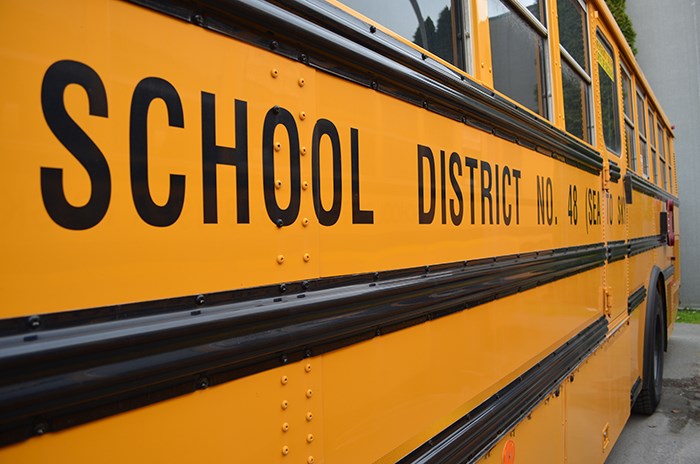Staff from Squamish’s Alternative School Day Program are proposing moving their students to Stawamus Elementary, citing a need for more resources, as well as a permanent home for the program.
“We feel strongly that if they had a more permanent home in sort of a nicer, more inclusive school community that would benefit the students and the program,” said Ryan Massey, principal of the program.
Catering to 39 students between Grades 8 to 12, the Alternative Program helps students who need a smaller, more supportive environment.
Included in the staff are four teachers, two part-time counsellors and a full-time youth care worker.
Currently, the students hold class in the portables behind Howe Sound Secondary. The proposed move would bring the program to two unoccupied classrooms in Stawamus. Some renovations may be needed.
At the most recent school board meeting, the heads of the program presented findings from a survey it conducted, which asked for feedback about the proposed move.
The results, they reported, were generally positive, with around half in favour, 38 per cent opposed and 10 per cent with no opinion.
Answering the survey was a mix of 68 parents, students and staff from both the Alternative Program and Stawamus Elementary.
Both positive and negative feedback from the survey was presented to the board.
One concern identified by respondents was the possibility that Alternative School students might be a “bad influence” at Stawamus, as the program has been stigmatized as a place for troubled students.
Board members were quick to point out that this was no longer the case.
“The Alternate School is not used as a punishment school anymore,” said trustee Laura Godfrey.
“It’s not a, ‘You’re being yanked out of this school and you’re going over here because you’ve done something bad.’ And I think in some cases, there’s still that perception out there.”
In reality, the Alternative Program has a diverse variety of students, which can include those with special needs, at-risk youth and the gifted, among others.
Another worry was that Alternative School students may not feel welcomed at Stawamus.
Furthermore, concerns were raised about changing the location, as it could make it harder for some students to access.
On the other hand, positives were also mentioned.
There would be greater access to staff on site, which would make it easier for educators and students at the Alternative School to get a hand if needed.
Being included in a school was also identified as a way to create a greater sense of community, allowing students at the program to feel more at home.
“They would have a library and a gymnasium,” said Supt. Lisa McCullough. “Just that whole feeling of belonging to something bigger, but not too big.”
Massey said the move had the support of both students and staff at the program.
Several solutions were identified to help address any concerns.
One of them would be a series of school tours and story-sharing sessions that would help reduce anxiety and stigma that might be directed towards Alternative School students.
Ambassadors from the program could meet at Stawamus to answer questions any of the affected parties might have.
Participation in Stawamus events, group activities and weekly visits were also floated to help make the transition smoother.
As of now, the board will be going over the details, and will be working to draft a motion.
So far, no firm dates have been proposed for the move.



